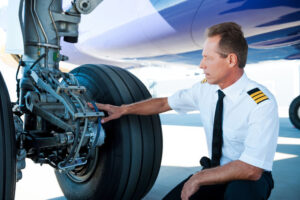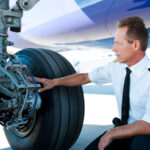Aviation training courses for mechanics are getting a boost from technology
I have never participated in virtual reality, probably because I’ve seen the people doing it look pretty darn silly. True, they’re riding roller coasters or bungee jumping or catching butterflies, but I prefer to maintain my existence in the real world and let all those thrill-seekers have at it. That is, until now. Aviation training courses are going virtual and it’s quite amazing!
When I was in college a hundred years ago, I took several maintenance classes for my flight technology degree and could have used a virtual training device back then. Instead, we divided into groups and were given an engine to disassemble and then (hahaha) reassemble. I’m not sure how much actual learning was going on, especially in my group of pilots, but with a lot of help from our teacher, we eventually put it back together. Thank goodness there were no metal detectors back then, however, because we all left with pockets full of unused parts that didn’t seem to fit anywhere. Yup, virtual reality would have been the way to go!
Recently, Rolls-Royce opened a brand new BR725 virtual training hangar. It is a complimentary two-day engine familiarization course for Rolls-Royce CorporateCare customers, but it is also available to anyone else who wants to pay to attend. The great thing about this training is that technicians don’t have to pack their bags and board a jet to get to a training facility halfway across the country. Instead, they participate remotely, from their homes, offices, or maintenance facilities. And they don’t grab wrenches and screwdrivers anymore; they grab VR glasses and handheld VR Controllers. Pretty cool!
Jason Whitman, a Rolls-Royce instructor, explained what the company had to go through to make the class as realistic as possible and why it was such a fantastic time to launch its new VR technology. Whitman spent a lot of time with a VR company during development. Creating the complex training environment was difficult because they had to get the shading, color, and texture of thousands of parts to look just right. It was also a challenge to make it possible for students to break the engine down into various systems and group them into their components and parts.
But they did it, and students can break each subassembly all the way down to its nuts and bolts in most cases. Or they can look inside the fuel metering unit and take it apart to see the spool valves and solenoids. When the student is working on a particular component, the computer can prioritize and disregard the rest of the engine, making it more visually pleasing for the technician. Then they can reverse the process and put it all back together – with no extra parts to hide from the instructor! This sounds like an incredible learning tool to me.
There is no question that virtual reality is the way of the future for hands-on aviation training courses. Rolls-Royce has taken an exciting piece of technology and turned it into a practical, cost-effective training tool. I’m confident that others will follow. I wouldn’t even mind if they created a refresher course for pilots who could use a better understanding of their engines and aircraft systems. The VR tool will undoubtedly enhance the safety of the skies.
RELATED CTS TRAINING










